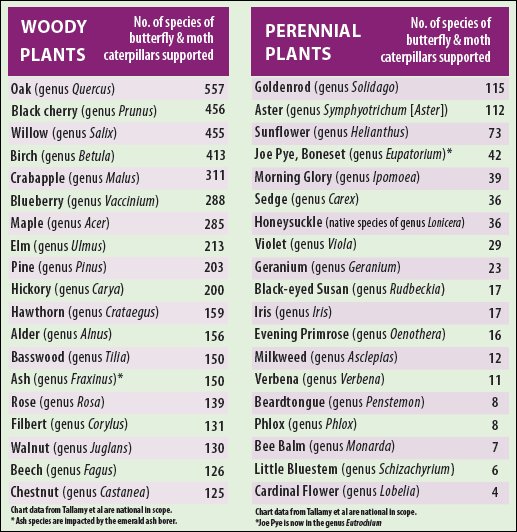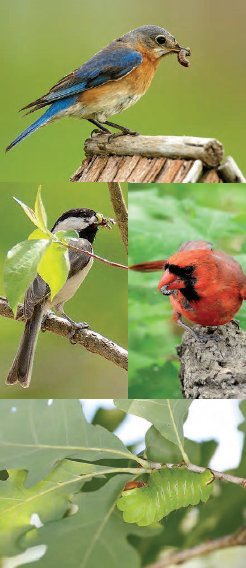AgEBB-MU CAFNR Extension
Green Horizons
Volume 24, Number 2
Spring 2020
Hosts with the Most
Our beloved birds-like cardinals, chickadees, orioles, bluebirds, and so many more-must feed their babies insects and other invertebrates. For example, to raise one nest of chickadee babies, parents must forage up to 9,000 caterpillars to feed them (Brewer 1961).
What nourishes caterpillars? Native plants! Caterpillars of native insects depend on native host plant foliage as their food sources-and these plants flourish despite the munching.
 |
Remember:
- Pesticides -including those sprayed on plants- can be harmful to insects and the baby birds that eat insects.
- When you shop for natives, chose true native species. Cultivars may not provide the full range of ecological benefits that natives do.
Native host plants on your property = insects, their caterpillars, and songbirds.
The native trees and perennials listed to the right are "hosts with the most." Their leaves provide food for many different kinds of insect caterpillars. The more native insects your property supports, the more songbirds and other cherished wildlife you can help.
 |
| Parent songbirds must find nutritious caterpillars-like this polyphemus moth caterpillar feeding on the leaves of oak-to feed their baby birds. |
Choose Native Plants. Find natives for the lower Midwest from Grow Native! professional members. See www.grownative.org for resources.
 |
 |
